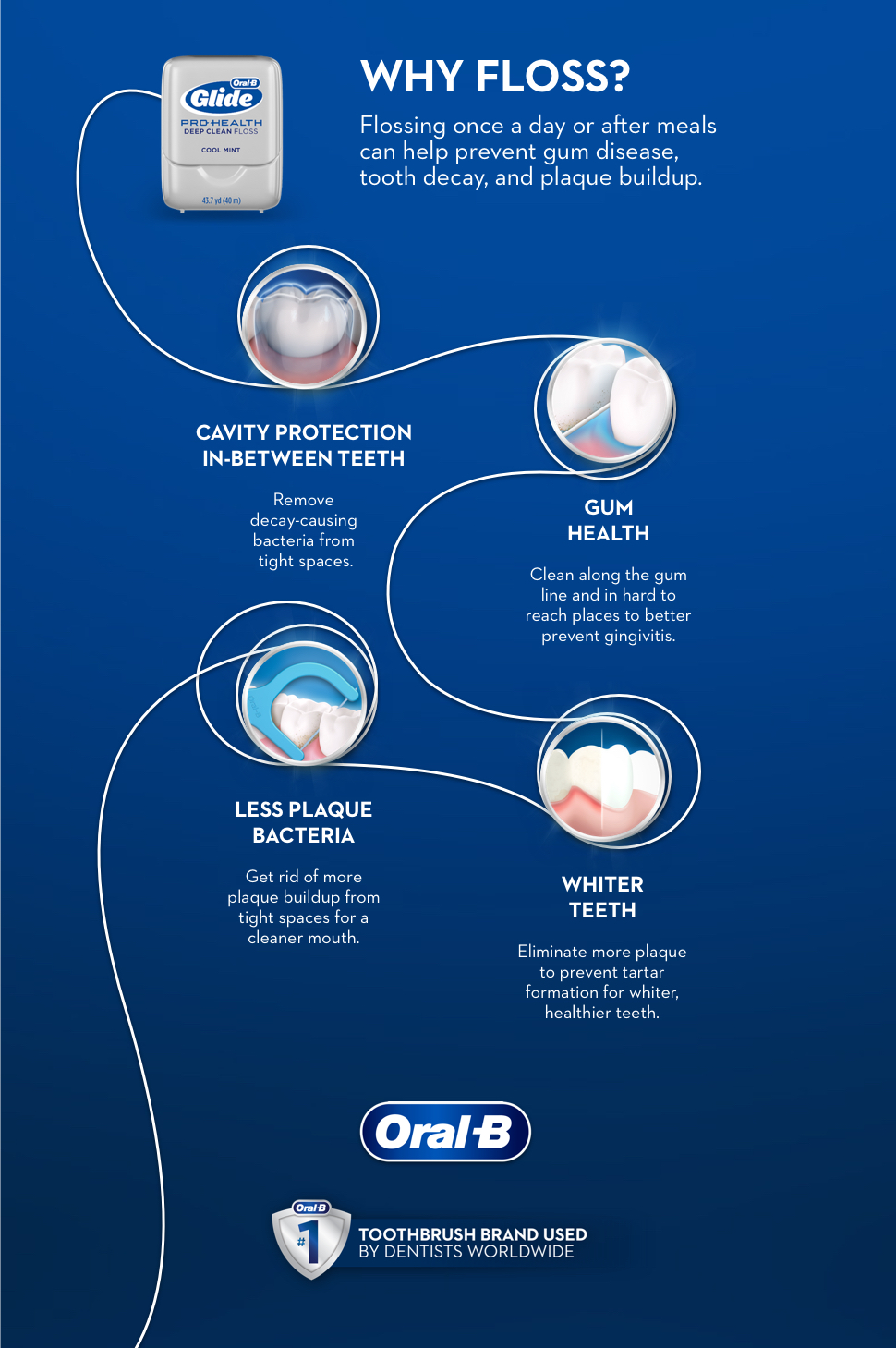Should I Floss or Brush First?

Summary
Table of Contents

This blog has been reviewed and approved by Dr Robert Lee, a dental professional of 35 years
LEARN MORE >You already know that a good oral hygiene routine consists of at least twice daily brushing and flossing a minimum of once a day—but have you ever wondered if you should floss or brush first? The short answer—it’s entirely up to you!

Should I Floss or Brush First?
Not sure if you should floss before or after brushing your teeth? When it comes to getting the best clean possible, figuring out the right order of your daily oral hygiene routine comes down to which sequence removes more plaque, food particles, and debris from your mouth.
Flossing after brushing is often the go-to order for most people. After all, brushing helps remove plaque and food from tooth surfaces, leaving the tighter spots to the floss.
However, for some, brushing first then flossing may leave behind plaque or food particles that are removed from in-between teeth while flossing, and that debris can remain in your mouth until the next time you brush. Which is why it’s important to brush at least twice a day, or after meals. Maintaining a complete oral care routine of flossing and brushing every day, can help keep plaque out—no matter the order.
So, should you brush or floss first? That depends on you. As long as you continue to pair flossing and brushing as part of your daily oral hygiene routine, you’re still getting the thorough clean your mouth needs to keep your teeth strong and gums in good condition.
What are the Benefits of Flossing?
To keep your mouth clean and gums in good condition, it is recommended that you floss at least once and brush twice a day as part of a complete oral hygiene routine.
- Remove More Plaque: Plaque gets trapped in-between teeth and flossing helps to dislodge it. Brushing with an electric toothbrush, like the Oral-B iO2, can help to further remove more plaque bacteria and debris from your mouth to help prevent cavities. Its unique round brush head adapts to each of your unique teeth for a more perfect clean.
- Help Keep Teeth Bright: To better fend off staining on teeth and discoloration as a result of tartar which can only be removed by a dental professional, it’s best to avoid tartar in the first place. When hardened, plaque buildup turns into tartar, affecting the color of your smile. When flossing, you can remove more plaque before it has a chance to harden into tartar to keep your smile healthy and bright.
- Keep Gums in Good Condition: Good gum care is important, especially since gums are the foundation of your smile. When you floss and brush for the dentist-recommended 2 minutes, you’re better able to clean your gum line more effectively. Flossing at least once a day removes more of the plaque bacteria that can lead to gum disease such as gingivitis. Daily flossing and twice daily toothbrushing can help prevent gum disease from taking root, helping you maintain your gum health and avoid tooth decay in the form of cavities.
Find out about the other benefits of flossing
What's the Best Type of Floss for Me?
When looking for the best floss for you, it helps to consider convenience, whether or not you have braces, and if you’re looking for a gentler clean along the gum line. Oral-B’s line of dentist-recommended floss is designed to help you remove more food particles, debris, and plaque.
- For a Gentle Clean: Glide 3D White Whitening + Scope Floss is gentle on both the fingers and the gum line while delivering an efficient clean.
- For a Whole-Mouth Coverage: Oral-B Satin Tape features a silky, wide ribbon-like floss to better clean between larger gaps and hard to reach areas.
- For Dental Work: Flossing when wearing braces can be difficult, fortunately, Oral-B Super Floss combines a stiffened end, spongy and regular floss, to better clean around wires, brackets, and bridges.
- For Gum Care: A water flosser like the Oral-B Water Flosser Advanced, Portable Oral Irrigator Handle Featuring Oxyjet Technology can help deliver a more invigorating clean along your gum line.
Practice a Complete Oral Care Routine
When it comes to flossing or brushing first, there are several benefits to having the floss make its debut first. When practiced regularly, a thorough oral hygiene routine can help keep your breath fresh, teeth clean, and gums in good condition.
- Floss at least once a day to remove more plaque, food, and debris.
- Be gentle when flossing, using the correct technique to remove plaque while maintaining the condition of your gums.
- Brush at least twice a day, preferably with an electric toothbrush for a more effective clean.
- Use fluoridated toothpaste to help reduce plaque buildup and strengthen teeth.
- See your dental professional at least twice a year for professional cleanings and checkups.
From Oral-B, the #1 toothbrush brand used by dentists worldwide.
Sources
- https://www.aaoinfo.org/blog/should-i-floss-or-brush-first/?gclid=CjwKCAiA17P9BRB2EiwAMvwNyPP7qFprg-6eS2ZGEdi474QD2ztnuCjPyNusjXBqD8yMOg5eqL_HShoCxsAQAvD_BwE
- https://www.healthline.com/health/dental-and-oral-health/floss-before-or-after-brushing#other-tips
- https://www.perio.org/consumer/brush-or-floss-first
Table of Contents
- Should I Floss or Brush First?
- What are the Benefits of Flossing?
- What's the Best Type of Floss for Me?
- Practice a Complete Oral Care Routine
-
- Sources

This blog has been reviewed and approved by Dr Robert Lee, a dental professional of 35 years
LEARN MORE >
Sign Up
for expert advice and exclusive offers

Sign Up
for expert advice and exclusive offers


